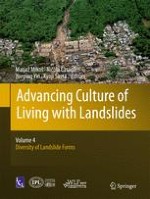2017 | OriginalPaper | Buchkapitel
Geomorphology and Susceptibility to Rainfall Triggered Landslides in Gudbrandsdalen Valley, Norway
verfasst von : Håkon Heyerdahl, Øyvind A. Høydal
Erschienen in: Advancing Culture of Living with Landslides
Aktivieren Sie unsere intelligente Suche, um passende Fachinhalte oder Patente zu finden.
Wählen Sie Textabschnitte aus um mit Künstlicher Intelligenz passenden Patente zu finden. powered by
Markieren Sie Textabschnitte, um KI-gestützt weitere passende Inhalte zu finden. powered by
